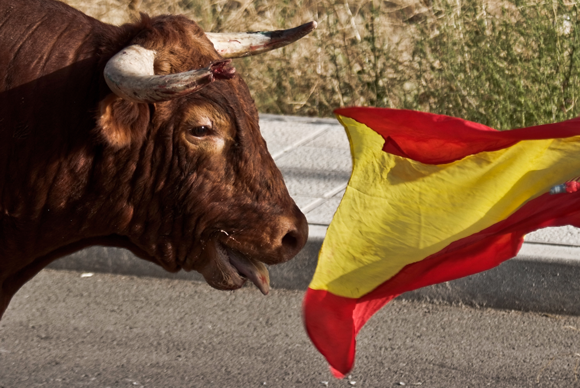The sun rises over the arid plains of Spain, casting long shadows across a storied landscape. As hundreds gather in anticipation, the air buzzes with a sense of excitement punctuated by tradition. Bullfighting—an age-old spectacle—beckons its patrons with promises of valor, a showcase of artistry, and a rich tapestry of cultural history. Yet, in the backdrop of this vibrant celebration lies a burgeoning discourse, one that questions the very essence of this practice: Is bullfighting an enduring national heritage or a glaring manifestation of animal cruelty?
This dichotomy forms the crux of a heated debate that has drawn attention not only from Spaniards but from individuals across the globe. For many, bulls symbolize honor and courage; the torero, or bullfighter, becomes a romantic figure embodying gallantry. However, the somber reality for the bulls involved tells a starkly different tale. While proponents of bullfighting hail it as a tradition steeped in artistry and historical significance, opponents argue that at its core, it constitutes barbarism.
To grapple with this multifaceted issue, one must delve into the historical context surrounding bullfighting. Tracing its roots back to ancient Mesopotamia, bullfighting evolved through various iterations, becoming particularly refined in Spain during the 18th century. Initially a display of wealth and power among nobility, the practice quickly infiltrated popular culture. Today, events like the San Fermín festival, where bulls are famously part of the running of the bulls, epitomize the seemingly unshakeable bond between bullfighting and Spanish identity.
Yet, this identity is mired in contradiction. Bullfighting enthusiasts often extol its virtues, portraying it as a performing art akin to ballet or opera. The elegance of the matador’s movements and the dramatic choreography of the fight evoke a visceral response from audiences, many of whom argue that this unique cultural expression must be preserved. Historically, matadors have been imbued with legendary status, admired for their perceived bravery and skill. Yet, can an art form rooted in the suffering of another sentient being truly be celebrated? Does the aesthetic appeal outweigh the ethical implications?
In examining the crux of the dilemma, one must confront the uncomfortable truth: the life of the bull is an expendable commodity in this relationship. Bulls raised for fighting are bred under conditions designed to emphasize aggression, often subjected to a host of stressors—confinement in small spaces, transportation in harsh conditions, and ultimately, a violent death in the arena. For each performance that elicits applause, there lies a creature that experiences fear and pain. The suffering inflicted upon these animals cannot be overlooked, regardless of cultural dictums or historical importance.
The juxtaposition of heritage and animal welfare raises compelling questions. Is it ethical to uphold traditions that contribute to the suffering of sentient beings, and can cultural practices evolve without sacrificing their core essence? As society shifts towards greater empathy for animals, an increasing number of voices challenge the status quo. Activists and animal welfare organizations fervently advocate for the cessation of bullfighting, asserting that it reflects an archaic mindset ill-suited for contemporary values.
In stark contrast, many who champion bullfighting insist that such practices are integral to national identity. They argue that the essence of Spain rests upon its unique cultural expressions, including bullfighting. For these advocates, the debate is not simply about animal rights but about cultural survival in an increasingly homogenized world. They posit that if bullfighting were abolished, a piece of Spanish history would be irrevocably lost, potentially leading to a slippery slope whereby other traditions could similarly fall under scrutiny.
This leads to yet another question: Can reconciliation be achieved? Is it possible to honor heritage while simultaneously advancing a more humane treatment of animals? Some propose alternatives that maintain the artistic integrity of bullfighting without the inherent cruelty. Variations, such as “bloodless bullfighting,” have emerged, showcasing the skill and grace of matadors without culminating in the death of the bull. These adaptations could bridge the gap between tradition and compassion, offering a viable path forward.
Additionally, public sentiment in Spain surrounding bullfighting is shifting. Polls indicate that a growing segment of the population, particularly the younger generation, favors more humane alternatives, while some regions have outright banned the practice. The Catalonia region, for instance, implemented a ban on bullfighting in 2010, reflecting a societal transformation towards prioritizing animal welfare over age-old customs.
Ultimately, the question of whether bullfighting is an exercise in cruelty or a celebration of heritage might not have a straightforward answer. It is a reflection of the cultural complexities and moral dilemmas that characterize contemporary society. While bullfighting may have once epitomized Spanish pride, the evolving attitudes towards animal rights cannot be ignored. As Spain grapples with this cultural conundrum, the challenge remains: can a nation steeped in tradition reconcile its past with a more compassionate future?
As the sun sets on the bullring, casting its golden rays on the blood-stained sand, one must ponder the legacy left behind. In the dance between heritage and humane principles, the question lingers: at what cost do we preserve our past? Shall we continue to celebrate a tradition that relies on suffering, or do we dare to forge a new path, one that honors both our history and the lives of the creatures who share our world?








